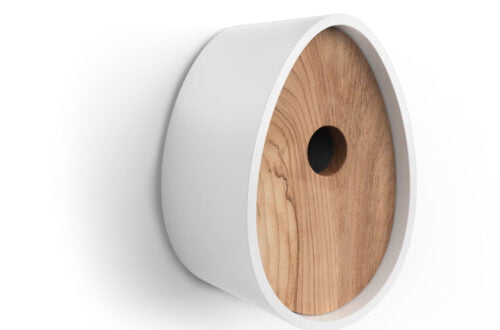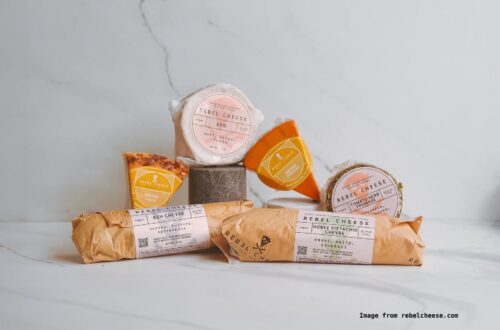Cup a Bug Shark Tank Pitch: Revolutionizing Pest Control with Innovation
“Shark Tank,” the critically acclaimed reality show, has served as a launching pad for numerous entrepreneurial ventures. It brings ambitious entrepreneurs face-to-face with seasoned investors, colloquially known as “sharks,” who have the capital and expertise to turn nascent ideas into widespread retail success stories.
In this highly competitive arena, entrepreneurs present their business models and products in hopes of securing an investment. Deals are struck based on a mutual agreement of equity and valuation. This often involves a careful negotiation to balance risk and reward for both the entrepreneur and the investor.
One such product that made its way to the “Shark Tank” stage is the Bug Bite Thing, a chemical-free solution for alleviating the irritation from insect stings and bites, known for its novel suction mechanism.
The entrepreneurs behind Bug Bite Thing pitched their product with the aim of securing a deal that would expand their business beyond online stores and into physical retail spaces. They wanted to leverage the interest and investment of a “shark” to scale their operation. Their presentation, effectiveness of their product, and understanding of the market dynamics were critical in garnering the attention and interest of potential investors.
The outcome of such pitches can result either in a lucrative deal or in entrepreneurs leaving without the desired investment, but the exposure on “Shark Tank” itself often catalyzes consumer interest and boosts sales.
Success in the “tank” can signify a shift from small-scale production to mass-market retail presence, an ambition harbored by many who stand before the sharks.
This is the intriguing backdrop against which the Bug Bite Thing’s fate in the intense negotiation landscape of “Shark Tank” unfolded.
Cup A Bug Shark Tank Pitch
During the presentation of Cup A Bug on Shark Tank, the founders stepped into the tank with the intent to secure an investment. They faced the panel of “sharks”—Mark Cuban, Lori Greiner, Kevin O’Leary, Robert Herjavec, and Barbara Corcoran—in hopes of securing a deal that would propel their business forward.
The episode featured the Cup A Bug product, an innovative solution designed to address common household insect concerns.
The founders presented their product details including pricing and the available colors, emphasizing the product’s ease of use and environmentally-friendly aspects.
They demonstrated how the cup worked, capturing bugs without harm for release outside.
Mark Cuban and Lori Greiner showed initial interest in the Cup A Bug, asking probing questions about market viability and growth potential. Meanwhile, Kevin O’Leary, known for his sharp inquiries, scrutinized the financials. He particularly questioned the company’s valuation and the desired stake.
The founders shared their story, detailing the journey of Cup A Bug from concept to market, and the personal motivations that drove them to create the product.
As the pitch progressed, the atmosphere intensified with the sharks deliberating the prospects of a deal. Details of offers were scrutinized, and counter-offers were proposed, showcasing the negotiating acumen of both the founders and the sharks.
By the end of the segment, viewers were left on the edge of their seats, eager to see whether the founders of Cup A Bug would leave the tank with the desired investment.
Cup A Bug Origins
Justin Huang, spurred by a common discomfort around insects, sought a humane and fear-free solution for bug removal from homes.
His childhood instinct to flee at the sight of bugs evolved into a more mature perspective. Huang believed that maturity lay in compassionate action rather than displays of bravery.
He conceived the idea for an innovative tool to ease the act of capturing unwanted critters. Huang envisioned a device that could enable individuals, regardless of their comfort level with bugs, to resolve their pest problems effortlessly.
The result of his musings was the “Cup A Bug,” a concept turning the common practice of using cups for catching bugs into a more practical, extended reach tool.
The foundational idea was simple yet effective: a cup attached to an elongated stick, allowing users to trap various insects from a safe distance.
This invention promised a no-kill, environmentally friendly answer to the everyday issue many face. It positioned the user “to be the bigger person” not through confrontation, but through an act of kind, non-lethal bug capture.
Huang’s journey from fear to innovation epitomizes the heart of “Cup A Bug.” This device resonates with those aiming to tackle small household inconveniences with ingenuity, offering a fusion of simplicity and practicality that appeals to the humane sensibilities of its users.
Cup A Bug Product and Price
Product Details
Cup A Bug presents an innovative, no-kill option for capturing insects. The design features a cup on a lengthy rod, equipped with a pivot mechanism for multi-angle catches. A built-in brush assists in guiding insects into the cup, making it particularly effective in tricky spots, such as tight corners or near ceilings.
Simplicity and safety are central to this product; it operates without chemicals or electricity, thus posing no risk to children or pets.
The device is notable for its ease of operation, offering a quick and straightforward solution for bug capture. Its humane aspect is also significant, as it allows for the insects to be released back into their natural habitat after capture.
Colors and Pricing
While specific color options are not listed, the product’s design ensures it can integrate visibly with a home setting.
Priced competitively at $39.99, it comes with the added benefit of free shipping. This price point reflects not only the functional value but also the ethical and environmental benefits encapsulated in the Cup A Bug’s concept.
User Experience
Rated highly by consumers, the Cup A Bug maintains a 5.00 out of 5-star rating based on customer feedback.
It’s clear that users value both the product’s effectiveness and its humane approach to insect capture.
How Does Cup A Bug Work
Cup A Bug functions as a manual insect trapping device. Users assemble it by snapping three components together: the handle, poles, and the cup.
The handle, aimed upwards, manipulates the device’s lid, which operates with a built-in lock. To open, press a button and slide the handle forward.
For disassembly, a critical step involves pushing the handle fully forward while the lid remains open to safeguard the internal string from damage. This action provides sufficient slack for safe separation of the poles.
Design features include an adjustable head capable of tilting in multiple directions, enhancing the chances of successfully capturing insects regardless of their location.
Additionally, a retractable brush at the front assists in dislodging bugs from confined spaces.
Safety and convenience emerge from the Cup A Bug’s chemical-free approach.
There’s no need for toxic substances as the device relies on mechanical suction and pressure created by the handle and lid mechanism.
Consequently, the Cup A Bug offers a simple, effective solution for a home pest-free environment.
Usage involves positioning the adjustable head, engaging the handle to seal the lid over the captured insect, ensuring user safety.
Regular maintenance, like ensuring the string maintains correct tension, is important for consistent operation.
In the event of an overstretched string, the process involves loosening a screw on the handle, adjusting the string’s tension, and re-securing it to ensure the lid closes properly.
If detachment occurs, reassembly requires careful re-threading of the string through the device’s components, maintaining tension, and anchoring it at the handle.
Cup A Bug Reviews
Customer Feedback
Customers widely share that Cup A Bug is straightforward to assemble. A review highlights the ease of connecting parts to capture a giant spider, affirming the device’s effectiveness.
Another echoes the sentiment, though they note the missing instructions, suggesting that closely inspecting the components reveals how to piece them together.
Despite assembly challenges noted by one buyer due to a lack of clear instructions, another counters by emphasizing the product’s functionality as advertised, managing to assemble with little guidance.
Ratings and Effectiveness
Ratings vary, yet several five-star reviews praise Cup A Bug for delivering on its promise.
One user expresses relief at not having to deal with pests themselves, thanks to Cup A Bug.
The item receives commendation for its innovation and potential despite some customers not having tested it yet. Enthusiasm over the tool’s practicality is palpable, especially for those averse to insects.
Testimonials
Personal testimonials reveal the product as a lifesaver for those with aversions to bugs.
One spouse appreciates the ability to handle insects from a distance, humorously claiming hero status after using Cup A Bug.
The narrative form of feedback denotes high customer satisfaction, albeit with a repeated desire for improved assembly guidance.
For more visuals and experiences, reviewers invite prospective buyers to visit Cup A Bug’s bug gallery.
Cup A Bug Business Model
Cup A Bug capitalizes on a direct-to-consumer sales model. They primarily leverage the convenience of Amazon for its distribution. This strategy mitigates the need to maintain a large inventory. It also optimizes the company’s gross margins and reduces overhead costs.
They focus on providing a humane and innovative solution for bug capture, which distinguishes them in the pest control market.
The product’s retail strategy also includes positioning in big box stores and chains like CVS. This expands their market presence beyond online platforms. In-store sales often yield a higher profit margin due to the impulse-buy nature of such consumer environments.
Cup A Bug’s presence in these retail outlets positions it well to capture sales from a diverse customer base.
Cup A Bug’s patent protects its unique design. It offers a competitive edge by preventing duplication from competitors. Holding a patent solidifies the company’s value proposition to both consumers and potential investors.
As the company grows, attention to gross margin and profit margin remains crucial. Strategies focusing on maintaining product quality while exploring cost-effective manufacturing methods will ensure sustainability.
Moreover, pricing structures are designed to maintain profitability while still being competitive in the pest control market.
Sales data, though not publicly detailed, likely reflects the product’s utility and market need. The company’s decision to avoid diluting the brand through excessive product lines keeps the focus tight and the business model robust against market shifts.
Cup A Bug Social Media
Cup-A-Bug has established a solid presence on various social media platforms. The company utilizes Instagram, Facebook, and Twitter to enhance brand awareness.
On Instagram, Cup-A-Bug shares images and testimonials of satisfied customers using their product. Regular posts featuring the Cup-A-Bug in action contribute to consistent engagement and encourage followers to share their own experiences.
Facebook serves as a hub for the company’s community-building efforts. The page features instructional videos, customer stories, and product updates. They engage followers with questions and prompts, fostering a space for interaction and customer feedback.
Cup-A-Bug’s Twitter account focuses on rapid communication and trends. Short, timely tweets with relevant hashtags help promote discussions around humane insect removal and eco-conscious living.
The company’s Twitter strategy targets brand growth through real-time engagement with their audience.
The cumulative effect of these social media campaigns translates into steady growth for the brand’s online visibility. While Instagram showcases the product’s ease of use, Facebook builds a community, and Twitter ignites conversations.
Through strategic content and audience interaction, Cup-A-Bug maintains professional social media practices that drive their marketing success.
Cup A Bug Competitors
In the market of insect capturing products, Cup A Bug faces various competitors with innovative offerings.
Inchbug, founded by Brenda Lee Feldman, is known for products like the Orbit Label and MyDrinky, a juice box holder. Inchbug does not directly compete in the bug catcher segment, but the company’s inventive approach to product design represents indirect competition for consumer attention and retail shelf space.
Another notable product that surfaced from “Shark Tank” is the Bug Bite Thing, which offers a solution to insect bite relief rather than capture. It utilizes suction to remove insect saliva or venom.
Traditional insect capture products also provide competition to Cup A Bug.
These range from simple fly swatters to more elaborate traps and electric zappers. While they serve a similar purpose, each product differentiates itself based on the method of capture and user safety.
Moreover, insect repellent products are considered indirect competitors as they prevent the need to capture bugs by repelling them.
These come in various forms such as sprays, lotions, and electronic devices emitting frequencies that deter insects.
The market landscape thus encompasses both direct competitions, through other bug capturing devices, and indirect ones, including repellents and after-bite solutions.
-
Direct Competitors (capture-based)
- Traditional fly swatters
- Electronic bug zappers
- Adhesive traps
-
Indirect Competitors (prevention & relief)
- Insect repellent sprays and lotions
- Ultrasonic insect repellent devices
- After-bite suction tools like the Bug Bite Thing





